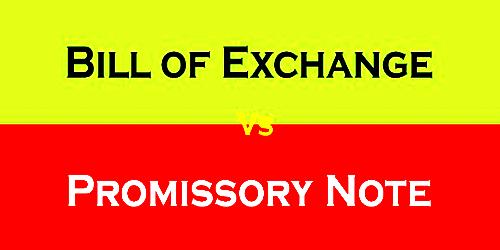A bill of exchange is an order to pay. A promissory note is a promise to pay. The fundamental difference between Bill of Exchange and Promissory Note is that the former carries an order to pay money while the latter contains a promise to pay money. In continuation of our series of the bill of exchange and Promissory Note, today we are presenting to you the difference between both of them.
- Parties.
There are three parties to a bill of exchange, namely, the drawer, the drawee and the payee, while in a promissory note there are only two parties: maker and payee.
- Nature of payment.
In a bill of exchange, there is an unconditional order to pay, while in a promissory note there is an unconditional promise to pay.
- Acceptance.
A bill of exchange requires an acceptance of the drawee before it is presented for payment, while a promissory note does not require any acceptance since it is signed by the persons who are liable to pay.
- Liability.
The liability of the maker of a promissory note is primary and absolute, while the liability of a drawer of the bill of exchange is secondary and conditional. It is only when the drawee fails to pay that the drawer would be liable as a surety.
- Notice of dishonor.
In case of dishonor of bill of exchange either due to non-payment or non-acceptance, notice must be given to all persons liable to pay. But in the case of a promissory note, notice of dishonor to the maker is not necessary.
- Maker’s position.
The drawer of a bill of exchange stands in immediate relationship with the acceptor and not the payee. While in the case of a promissory note, the maker stands in immediate relationship with the payee.
- Nature of acceptance.
A promissory note can never be conditional, while a bill of exchange can be accepted conditionally.
- Copies.
A bill of exchange can be drawn in sets, but a promissory note cannot be drawn in sets.
- Payable to bearer.
A promissory note, cannot be made payable to a bearer, while a bill of exchange can be so drawn provided it is not payable to bearer on demand.
- Payable to the maker.
In a promissory note, the maker cannot pay to himself. While in the case of a bill of exchange, the drawer and the payee may be one person.
- Protest.
Foreign bills must be protested for dishonor when such protest is required by the law of the place where they are drawn. But no such protest is required in the case of a promissory note.
- Dishonor.
In the bill of exchange, Notice is necessary to be given to all the parties involved. In Promissory Note, Notice is not necessary to be given to the maker.














